A Case Study on Northern Canada’s First Cold Climate Constructed Wetland Treatment System
Highlights:
Constructed wetland treatment systems (CWTS) are effective for mine water treatment in cold climates.
The first modern CWTS for a mine in cold climate was built in the Yukon Territory at a demonstration-scale in 2014 and is still operating today.
Consistent and predictable treatment of metals, metalloids, including selenium, copper, zinc, and molybdenum, in addition blasting residues (nitrate, ammonia).
Biogeochemical designs allow for performance to remain intact for metals and metalloids even during cold temperatures.
Discoveries from construction and pilot-scale operations inform closure planning for full-scale implementation
Beating the cold and contaminants
Minto Mine in the Yukon Territories is home to the first modern constructed wetland treatment system (CWTS) in a cold Canadian northern climate. Operating since 2014, the demonstration-scale system has proven that CWTS can effectively treat mine water during months of free-flowing water despite the site’s sub-arctic continental climate.
Maven’s founder, Dr. Monique Simair, designed, optimized, constructed, and operated the Minto Mine CWTS from 2013–2019 (formerly Dr. Haakensen and the founder of Contango Strategies which was sold in 2018). Since then, site personnel and local monitors operate the demonstration-scale CWTS, following the testing program as designed and outlined by Dr. Simair in earlier reports and workplans.
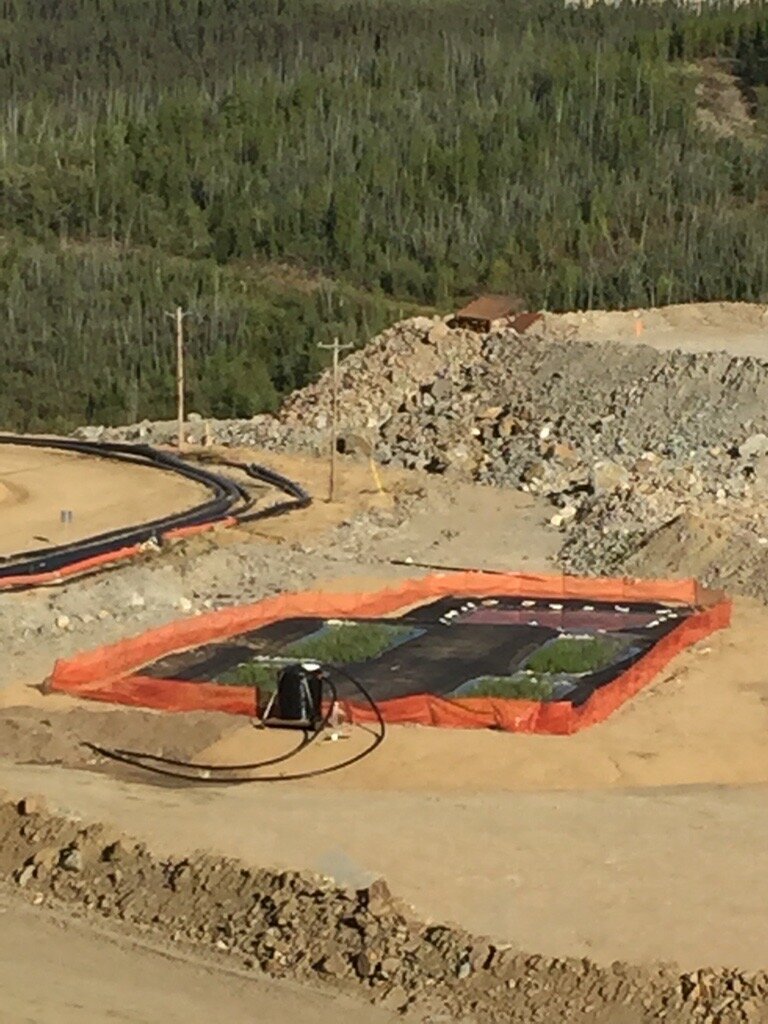
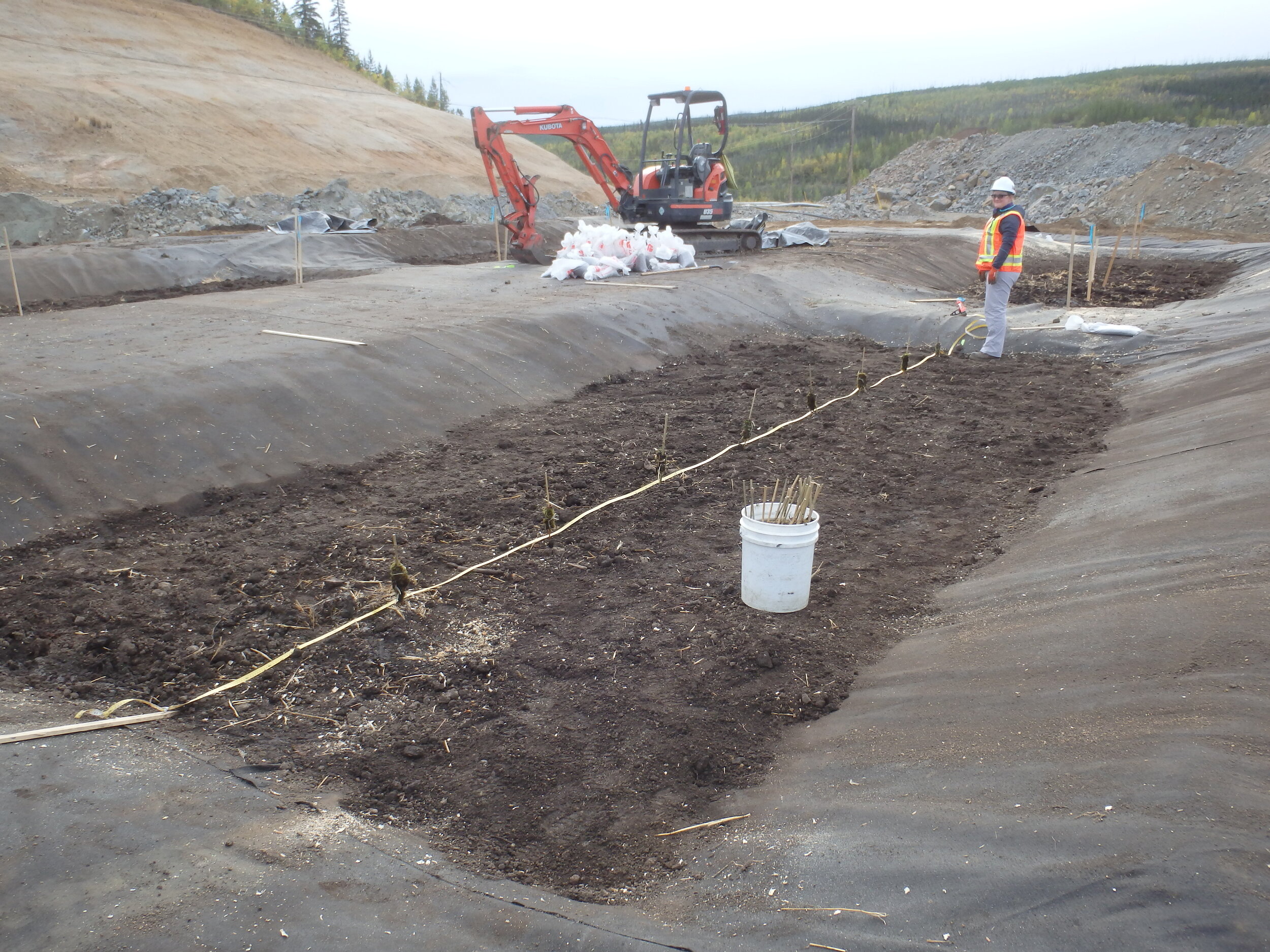
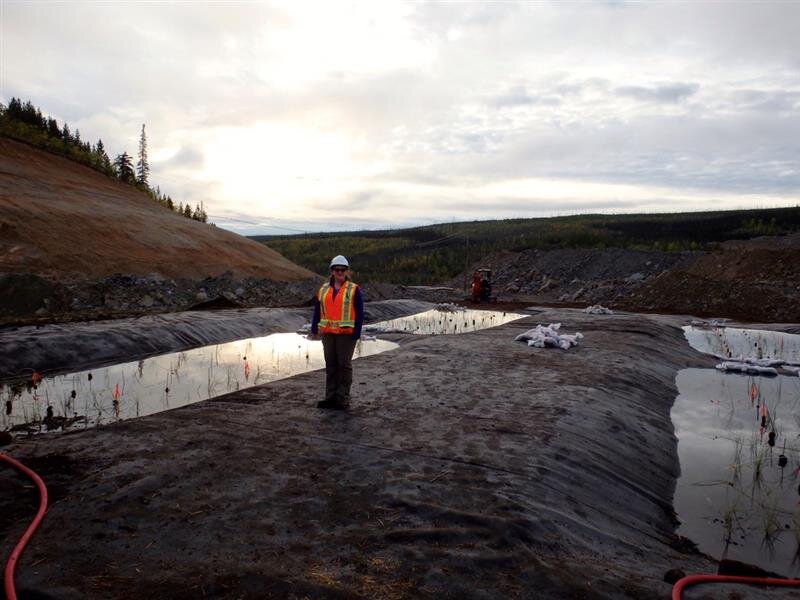
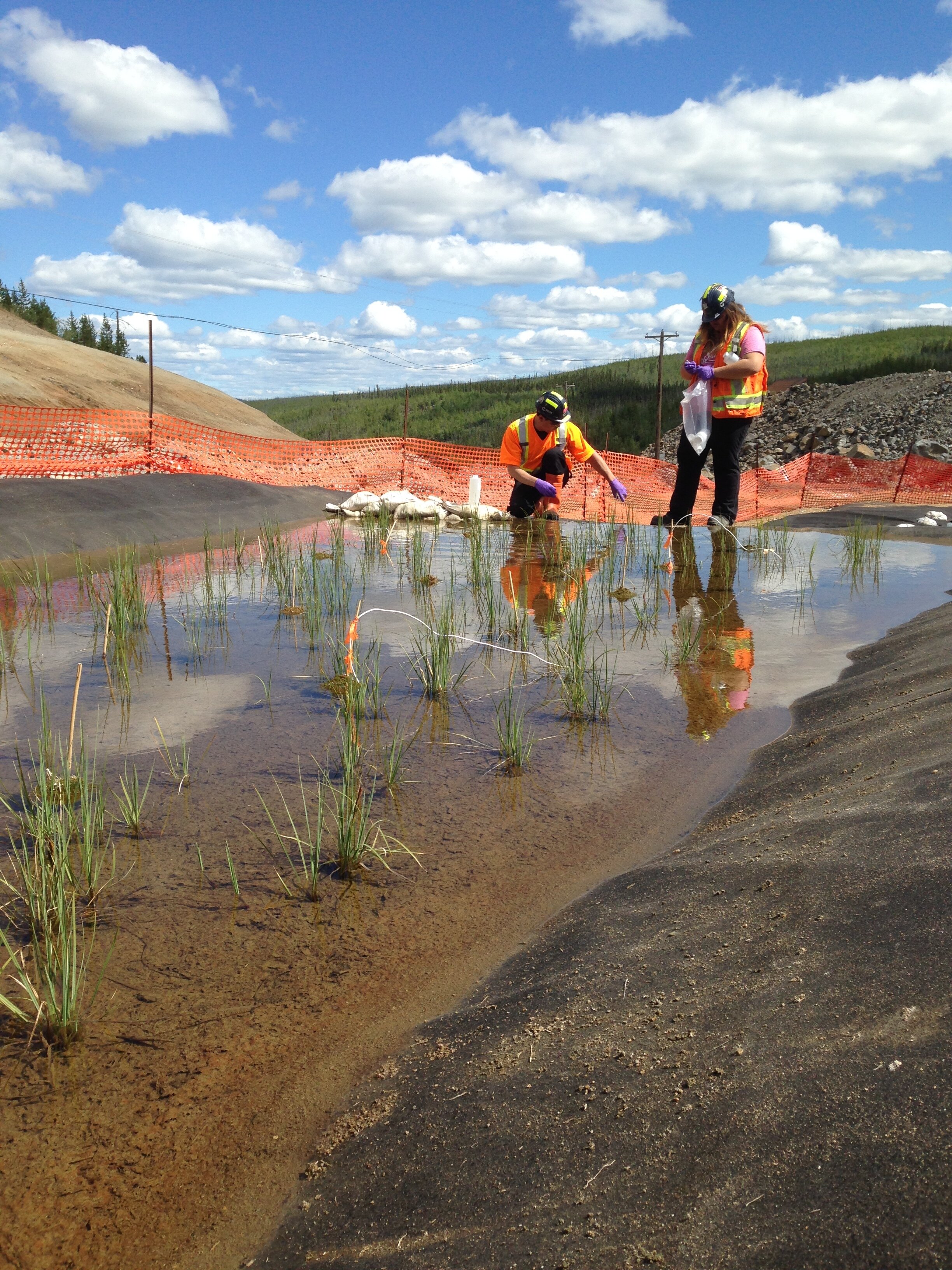

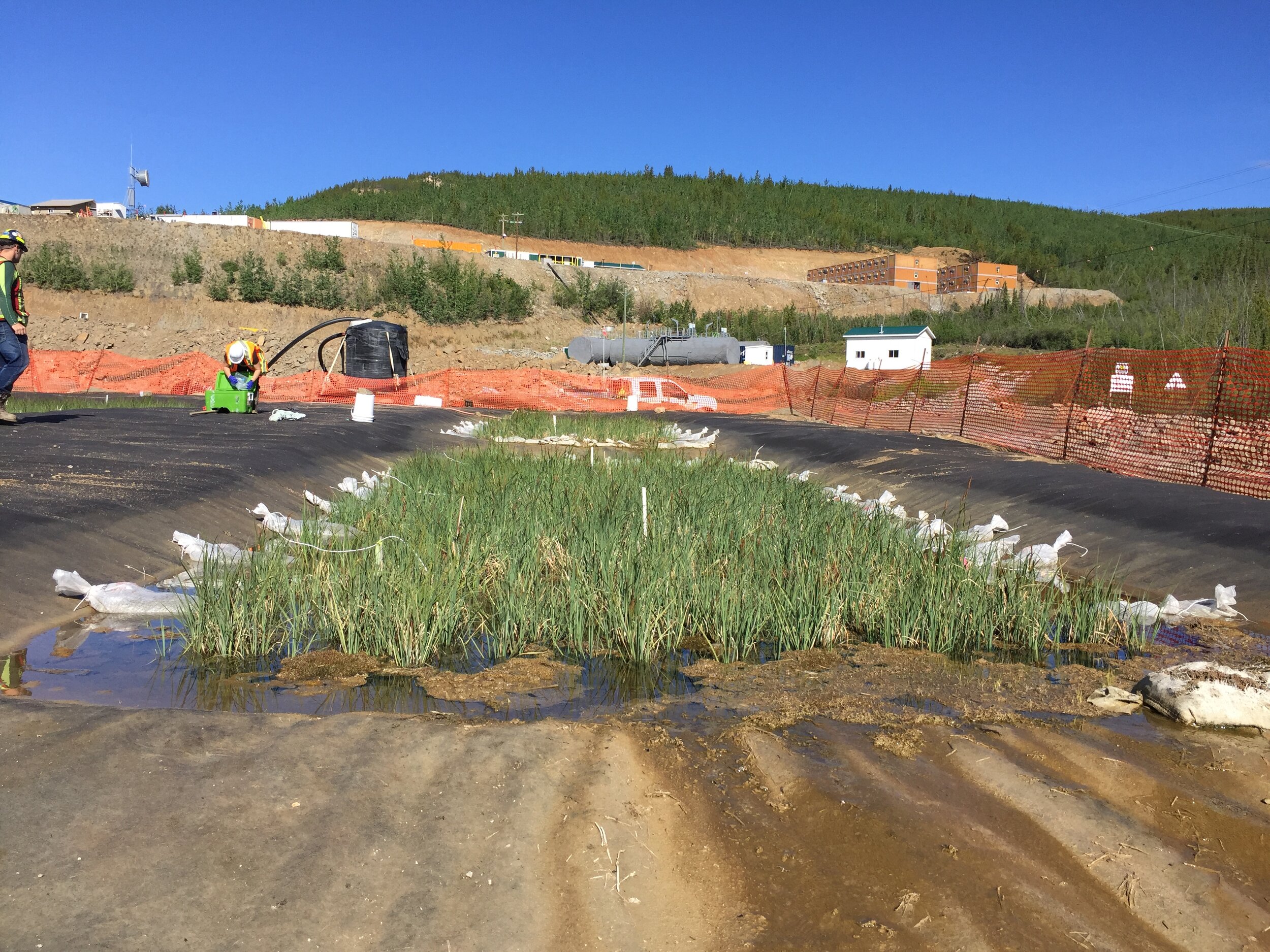
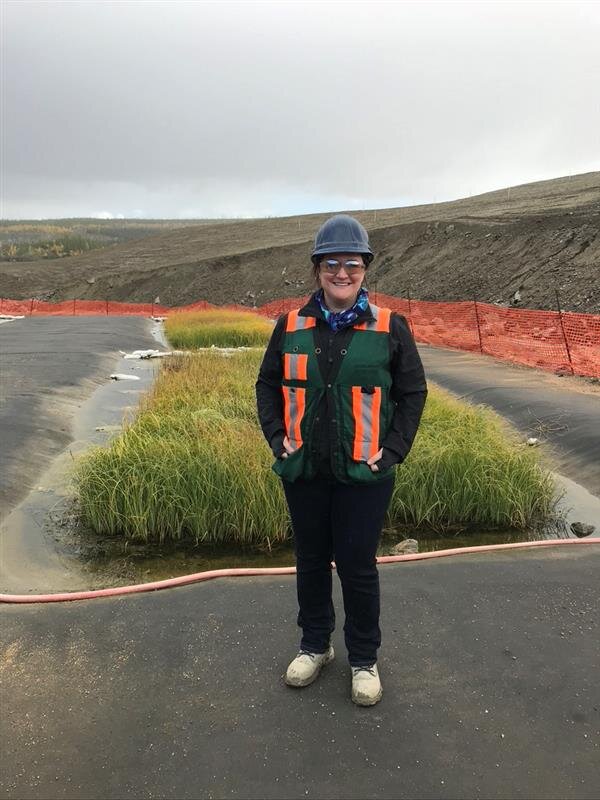
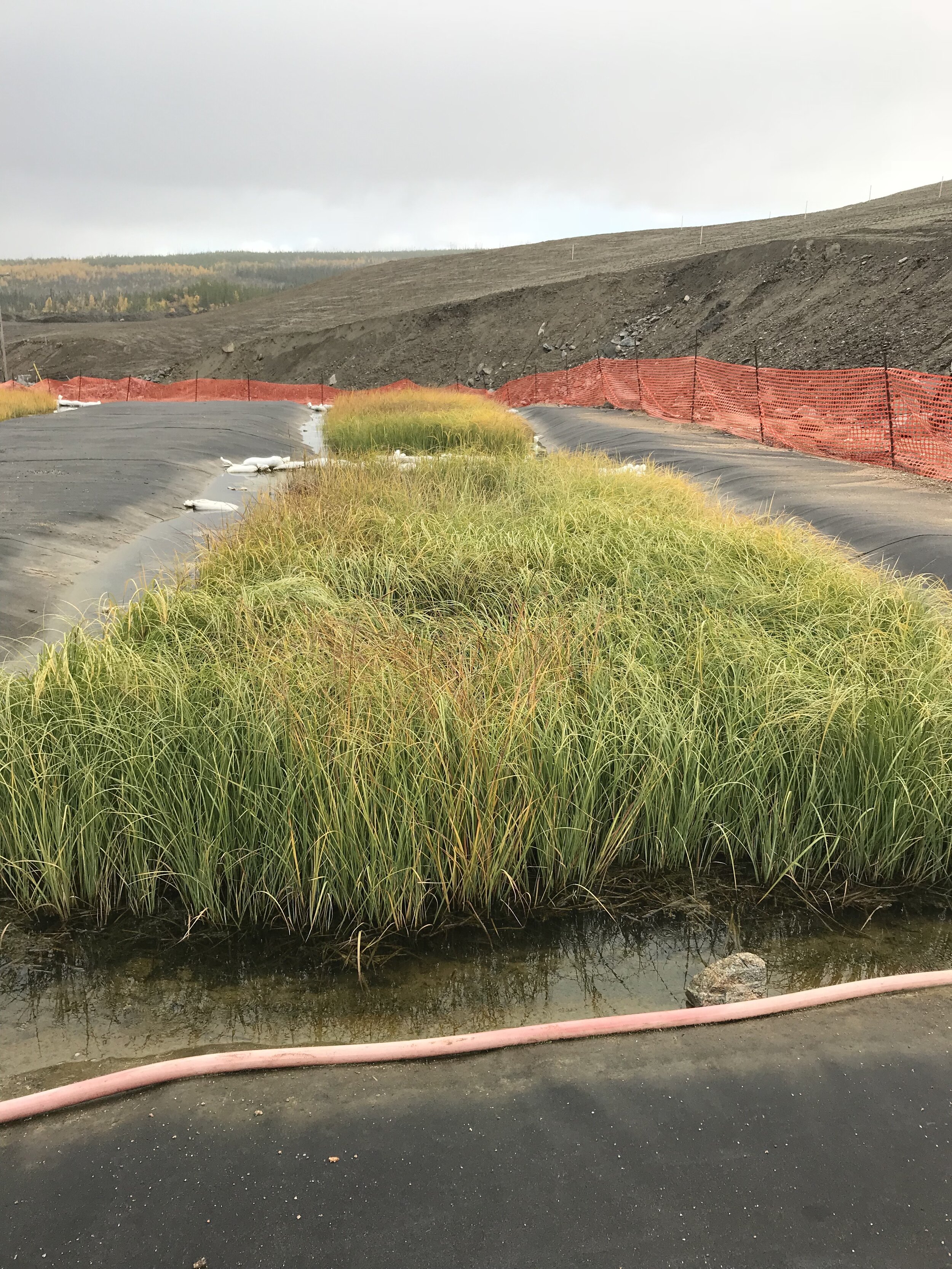
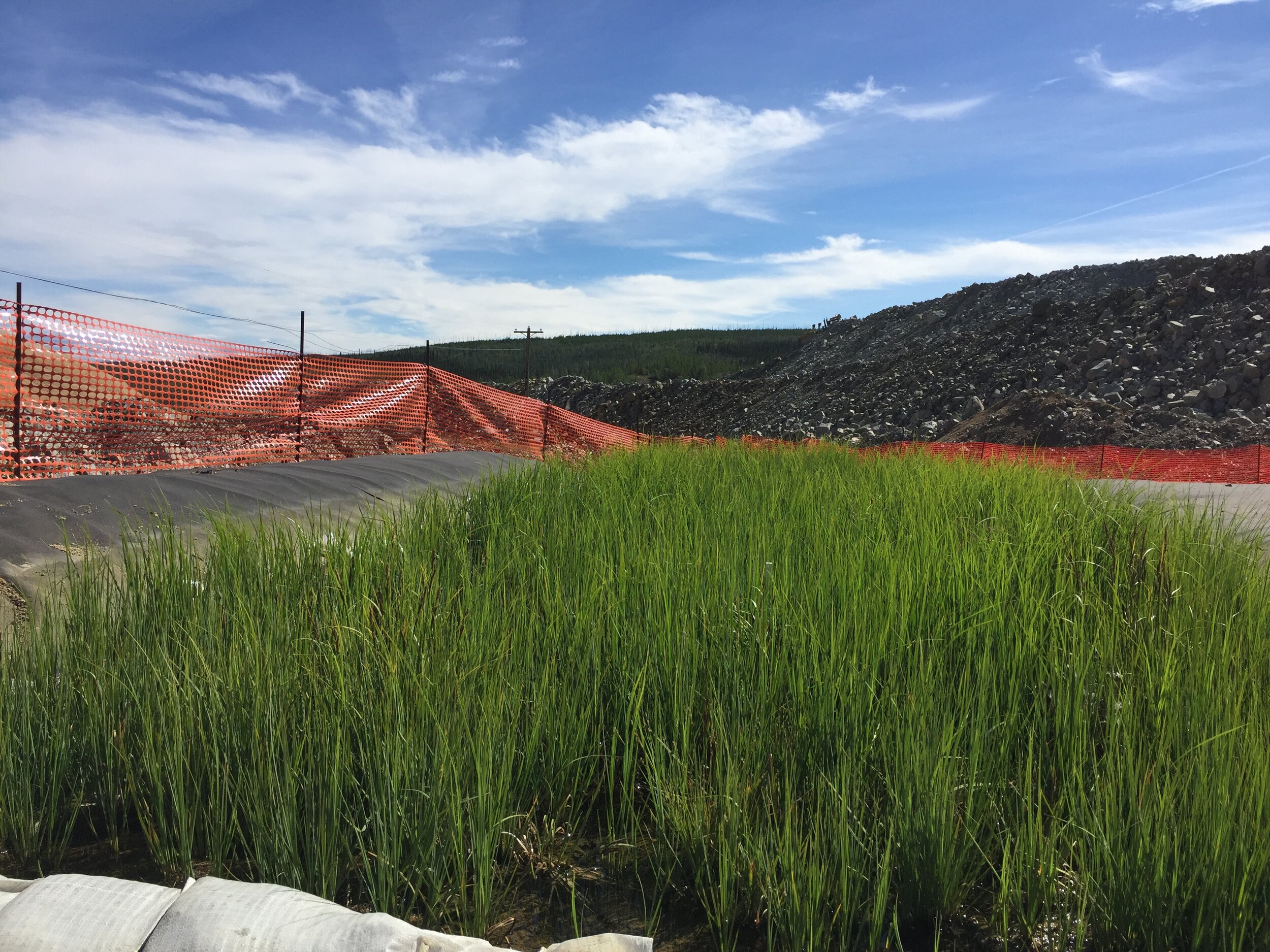
The mine was proactively seeking to develop sustainable water treatment options to be in place in the future when the mine closes. Based on modeled predictions, the CWTS was designed to treat cadmium, copper, molybdenum, selenium, and zinc, which were identified as constituents of potential concern (CoPCs). Ammonia and nitrate were also identified for treatment in early closure as they are present at most mine sites from blasting residues.
A CWTS was chosen through a Best Available Technology (BAT) study that evaluated multiple aspects of different water treatment options. CWTS are particularly well-suited for this closure scenario, as they can become self-sustaining treatment systems once established. Their functions are similar to a bioreactor, but with plants providing yearly renewal of carbon to fuel microbial activity—making them desirable for closure water treatment.
A phased approach: design, pilot, and optimize
For a CWTS to be effective, it must follow an approach that allows for site-specific improvement and optimization. At Minto Mine, the CWTS was designed and optimized for site-specific considerations through off-site pilot-scale testing. Paper 1, Paper 2.
While active treatment systems can use electricity and reagents to address flow and chemistry fluctuations, passive and semi-passive water treatment systems need to be designed to accommodate these, including identifying the highest risk pairings of chemistries and flows.
Three designs for the constructed wetland treatment system were tested and optimized at pilot-scale in an off-site testing facility. Although cattails (Typha latifolia) are widely regarded in literature for treatment wetlands, they do not grow naturally in most areas of the Yukon. Instead, local vegetation from the mine site was used, such as aquatic sedges (e.g., Carex aquatilis and Carex utriculata) and aquatic mosses (Bryophyta). As part of the pilot-scale studies, synthetic waters were produced in the laboratory to simulate different closure water quality scenarios, including base-case, worst-case, and early closure evaluations. It was the direct impact of pilot-scale testing that predicted closure water qualities that did not yet exist on the site, which helped inform decision-making. A summary of the pilot-scale trials was presented at the Mine Closure conference (2015).
Our team at Maven has decades of experience developing methods to accurately mimic many of the possible comprehensive water chemistries of mines and oil and gas operations. Through biogeochemistry and aquatic toxicology, we’re able to successfully treat water semi-passively.
Paving the future of passive water treatment
Although various other field trials have been attempted, Minto Mine was the first effective CWTS built on-site in Canada’s North. Its modern scientific design and specific treatment expectations are continually referenced by researchers today, who apply the lessons learned into future treatments.
Each year, a testing program was designed along with the construction of the system and has been followed to address uncertainties in the full-scale design, sizing, and operation of its CWTS. This program is designed not only to assess treatment, but to identify potential failure modes and recovery methods–the results of which, have been documented in peer-reviewed scientific articles, conference presentations, and annual reports. The most recent detailed report is available in the 2019 Minto Explorations Annual Report (pages 1669–1766). Throughout testing, assistance has been provided to the site’s permitting and regulatory needs.
Key findings from Minto Mine’s CWTS
Substrate selection requires rigorous control. The substrates used did not meet specifications for organic carbon, porosity, or metals content. Despite leaching copper into the CWTS, it was able to treat both the influent water and the additional load from the substrates used.
The closure water chemistry for a mine often does not exist on-site in operations and can be accounted for in off-site testing and modelling.
It can take two to three years for a metals-treatment CWTS to establish in the north and achieve consistent treatment. Finding a location on-site that can remain in place for years on an evolving mine site is not simple.
Successes with Minto Mine’s CWTS
Achieved target goals for metals, metalloids, and nitrogen treatment in a cold climate.
Consistent performance, even in cold seasons (as per the biogeochemical design of the system).
Refined full-scale designs.
Identification of early indicators of potential failures and potential recovery method.
Timeline:
From 2013 – 2019, feasibility evaluation, design, and testing of a constructed wetland treatment system (CWTS) were performed. This included the implementation of on-site demonstration treatment. Associated work, including permitting, annual reporting, and development of adaptive management programs were also successfully delivered.
Minto Mine project timeline.

